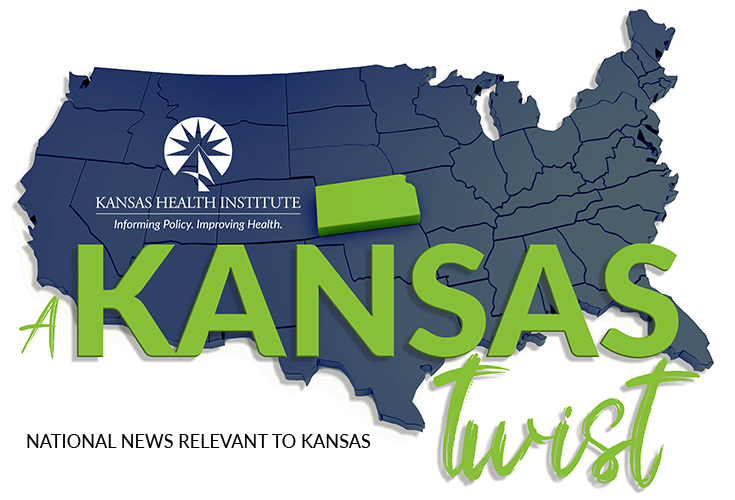Health insurance covers essential health services critical to maintaining health and treating illnesses and injuries. This insurance coverage dashboard provides a comprehensive overview of sources of health insurance coverage across counties in Kansas and describes the characteristics of the uninsured population in each county. It uses the most recent data available – the U.S. Census Bureau 2018–2022 American Community Survey (ACS) 5-Year Estimates that provide robust county-level estimates of health insurance coverage. Data presented in the dashboard may be different from our Annual Insurance Update report, which uses a different data source, the ACS Public Use Microdata Sample file, for state-level estimates.
Information Hub: Health Insurance Coverage in Kansas
4 Min Read
Jun 24, 2024
By
Angela S Wu, M.S., Kaci Cink, M.P.H.,Alex Ferguson,
Wen-Chieh Lin, Ph.D.
Source: Kansas Health Institute analysis of data from the U.S. Census Bureau 2018–2022 American Community Survey 5-Year Estimates.
User Guide, Notes and Sources Tab
User Guide
This dashboard has two main tabs to view. A description of how to use each tab is below.
Tab 1: Sources of Health Insurance Coverage
This tab is based on the 2018–2022 American Community Survey (ACS) 5-Year Estimates, Table B27010. Because ACS respondents can report more than one type of insurance, the Kansas Health Institute utilizes a standard hierarchy (see Appendix C of the Annual Insurance Update for details) to assign health insurance coverage, as follows:
- Public Coverage refers to coverage provided through government-sponsored health insurance programs including Medicare, Medicaid, the Children’s Health Insurance Program (CHIP) and VA health care.
- Private Coverage refers to employment-based health insurance, military/TRICARE or insurance purchased directly from a private health insurance company or the marketplace created by the Affordable Care Act.
- Uninsured refers to people with no health insurance coverage.
Tab 2: Characteristics of the Uninsured Population
This tab is based on the 2018–2022 ACS 5-year Estimates, Table S2701. The Uninsured Distribution and Uninsured Rate are shown for the population characteristic listed below. Some variables may not be available for some counties due to small population sizes. Subpopulation groups with small sample size are combined for analysis to enhance the confidence around estimates.
- Age
- Population: Civilian noninstitutionalized population.
- Race
- Race and Ethnicity are reported separately in the ACS 5-year Estimates data.
- Population: Civilian noninstitutionalized population.
- White Alone: Race reported as White alone and can be any ethnicity.
- Black or African American alone: Race reported as Black or African American alone and can be any ethnicity.
- Other Race: Combination of the following race groups, American Indian and Alaska Native alone, Asian alone, Native Hawaiian and Other Pacific Islander alone, some other race alone, Two or more races.
- Ethnicity
- Race and Ethnicity are reported separately in the ACS 5-year Estimates data.
- Population: Civilian noninstitutionalized population.
- Hispanic: Ethnicity of Hispanic or Latino origin and can be Any Race.
- Non-Hispanic is calculated as civilian noninstitutionalized population minus Hispanic population.
- Federal Poverty Level (FPL)
- Population: Civilian noninstitutionalized population for whom poverty status is determined.
- The number of people in the 100 percent–137 percent FPL category is calculated as the number of people below 138 percent FPL minus the number of people below 100 percent FPL.
- Employment
- Population: Civilian noninstitutionalized population age 19 to 64 years.
- Full time: Worked full-time, year round in the past 12 months.
- Part time: Worked less than full-time, year round in the past 12 months.
- Unemployed: Did not work in the past 12 months.
- Educational Attainment
- Population: Civilian noninstitutionalized population age 26 years and over.
- Some college degree or higher: a combination of some college or an associate’s or bachelor’s degree or higher.
- High school graduate: high school graduate or equivalent.
- Citizenship Status
- Citizen: Native born or naturalized foreign born.
- Non-Citizen: Not a citizen.
What is the American Community Survey?
-
- The American Community Survey (ACS), administered by the U.S. Census Bureau, is an ongoing nationwide survey sent to approximately 295,000 addresses per month. Of households that receive the ACS form, a subset also receives a follow-up, in-person interview. The ACS collects population and housing information every year, thus providing up-to-date information about the U.S. population. As part of the survey, respondents are asked if they have health insurance coverage at the time they are surveyed or interviewed. The survey results, therefore, represent point-in-time coverage for a large sample of individuals throughout the year.
About Kansas Health Institute
The Kansas Health Institute supports effective policymaking through nonpartisan research, education and engagement. KHI believes evidence-based information, objective analysis and civil dialogue enable policy leaders to be champions for a healthier Kansas. Established in 1995 with a multiyear grant from the Kansas Health Foundation, KHI is a nonprofit, nonpartisan educational organization based in Topeka.